Your website is so much more than a digital storefront - it's the face of your business, the first handshake with potential customers, and often the deciding factor in whether they stay or leave. A well-designed website isn't just pretty; it's functional, intuitive and built to convert visitors into loyal customers.
But let's face it: designing a website that looks good and works seamlessly is no easy task. Many startups fall into common design traps that can cost them conversions, trust and revenue. At Codica, with over 10 years' experience building websites that engage users and drive sales, we've seen it all.
In this article, we'll break down the most common web design mistakes startups make - mistakes that frustrate visitors and drive them away. You'll learn how to avoid these pitfalls and create a website that not only meets, but exceeds expectations. Let's get started!
What is web design, and why is it essential?
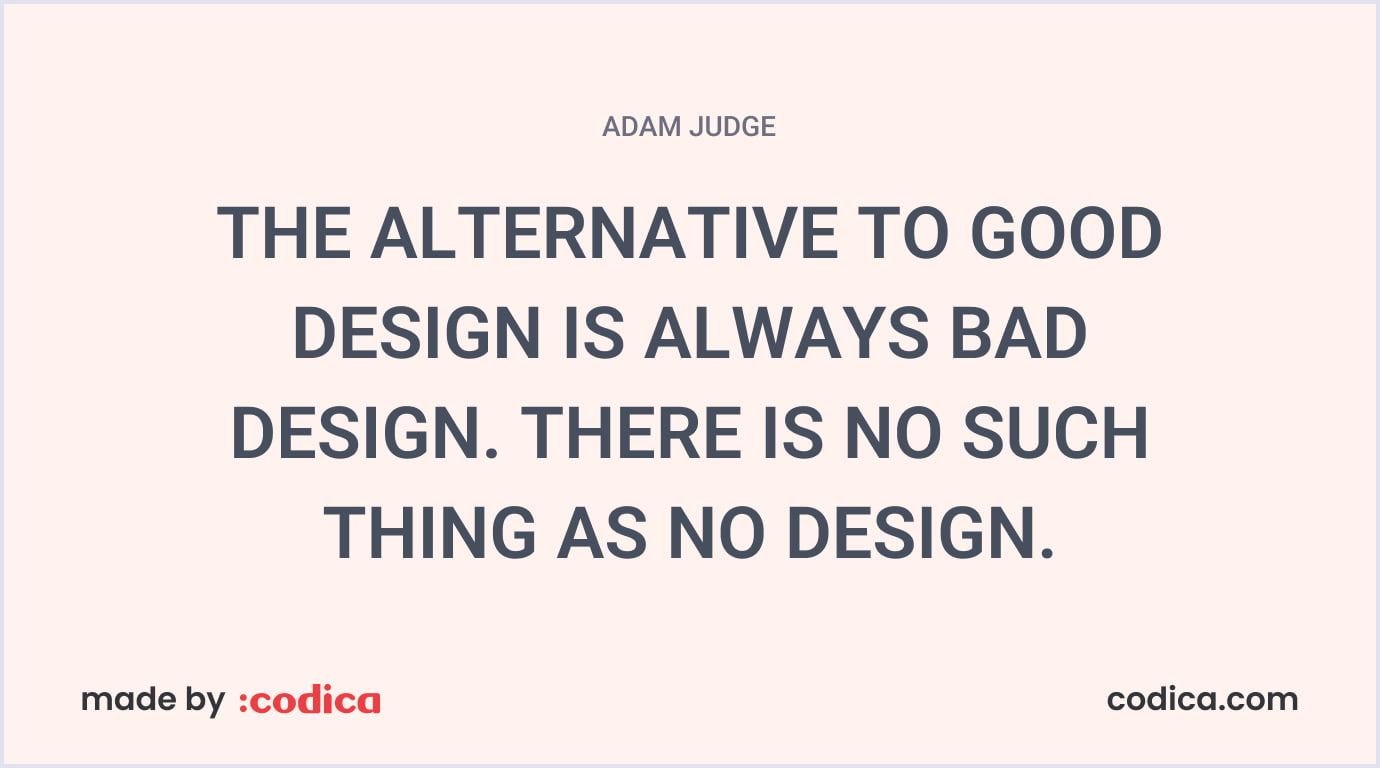
Let's begin with the meaning of web design. Web design is what makes the general look and feel when using a web solution. A report by Stanford states that 75% of people judge a brand by its web design. It impacts their feelings in the user journey.
Visual elements of web design are images, text content, colors, fonts, various buttons, forms, icons, and the general layout itself.
What does the right web design bring to the business owner?
- First, the right web design increases brand awareness. A satisfied user will recommend the site to their friends or share the link on their social networks. Undoubtedly, good web design is one of the core elements of attracting a wide audience in a short time.
- Second, it is an increase in conversion. A usual visit to the site is not interesting for the owner. All business owners crave action from the user. If the visitor likes the interface and quickly understands the site, the desire to register or purchase will be much higher. Surely, sometimes visitors will not do this right away. Yet, after a few days, the user will still return to you.
Web design isn't just about looks - it's a serious factor that can have a direct impact on business performance. A well-structured, intuitive design improves the user experience, builds trust and drives conversions. Even tiny mistakes can irritate visitors, ruin your brand reputation and consequently reduce sales. This underscores the importance of understanding the most common web design pitfalls and how to avoid them.
Let's take a closer look at these mistakes and learn how to create a website that effectively supports your business goals.
15 major web design mistakes: overview
Here is the list of the most common web design mistakes we see in website projects.
1. Low-quality or stock images
It is no secret that graphics and images are a crucial part of web design. When images are added incorrectly, they can confuse the visitor. However, many companies are still using poor-quality and irrelevant images. Don’t repeat this one of the main website design mistakes.
Poor-quality images will turn off your prospects, which hurts your sales. A buyer will involuntarily think that the business can’t afford a professional photo session. So this means that this brand should not be trusted. Or the goods do not exist at all since the pictures are downloaded from the Internet. Also, irrelevant images will only confuse your potential customers.
It is not advisable to use stock photos. These photos do not inspire confidence among page visitors and cheapen the businesses. Moreover, if you download a picture from a stock, another brand could also download it. So, it will be clear that you are repeating. Often, on stock images, people are with very artificial emotions. And this also can repel the buyer.
If you still use stock images, process them, add branded style elements, and fit the image into the overall design of the site. This maintains style uniformity. Thus, the offer becomes more valuable, and the brand is remembered by the audience. Yet, we recommend trying to take your own photos.
For instance, at Codica, we use photos of our teammates instead of stock photos. The page below demonstrates the custom UI/UX design services we provide.
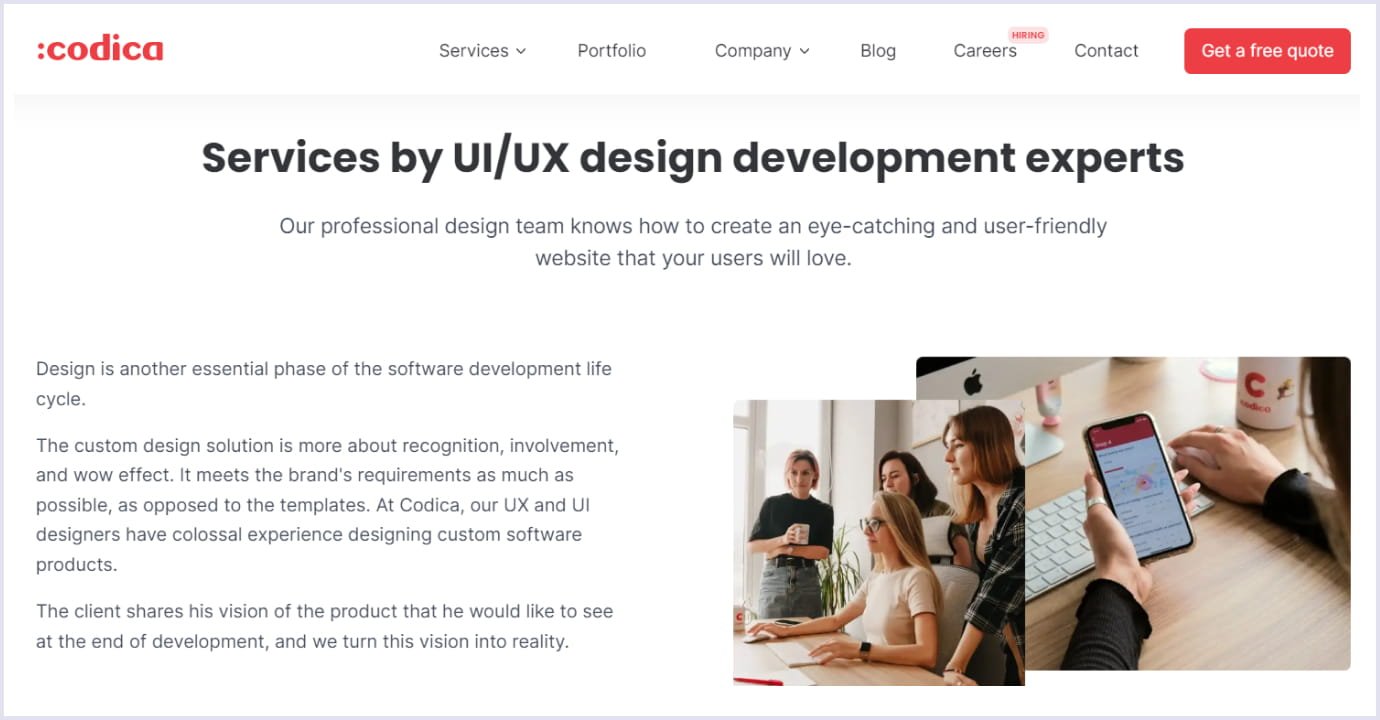
Also, you shouldn’t clutter your web pages with too many images. Why? They can take the focus from CTAs (call-to-actions), and that leads to a loss in conversions.
2. Hard to find contact info
A lack of contact information is the next one of the most common web design mistakes.
The moment website visitors define to purchase or order your services is crucial. So, it is essential to provide them with the necessary contact information when they choose your company to order something.
If users search through your solution for contact info for some time, they will likely become frustrated and exit. Keep in mind that the “Contact us” section should always be one click away from the user. Your company's information should be at the bottom. Also, you can add contact details or a contact-us link on the top of every page for prompt connection.
Below is an example of the Frontpoint online store's clear contact information.
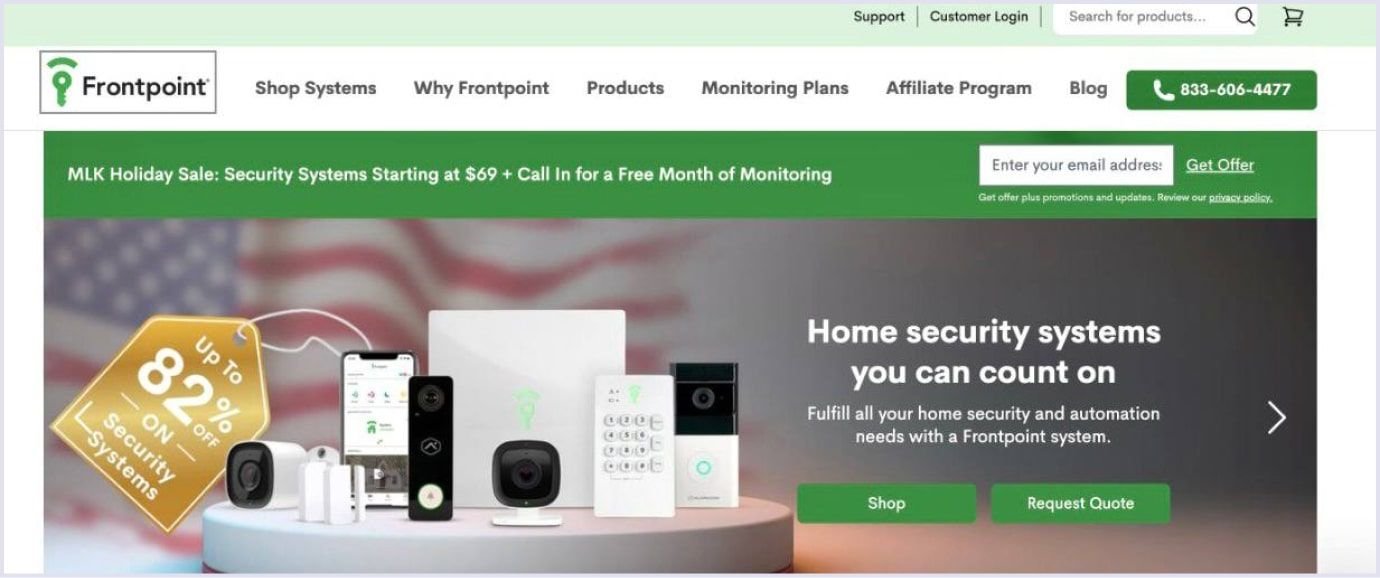
Source: Frontpoint
3. Unclear CTAs
A CTA is a link, banner, or button that tells the user on your site what to do next.
When potential customers scroll through your website, they might see a CTA that says "Create an account," "Buy now," or "Download here." Basically, a CTA is a way to encourage people to take a specific action.
Some of the powerful website CTAs that will help you to achieve your digital marketing goals include the following:
- Get started,
- Add to cart,
- Sign me up,
- Contact us,
- Order now,
- Shop,
- Subscribe,
- Buy now.
Not implementing a clear call to action at the appropriate places can result in not converting many prospects. Overusing CTAs can also lead to annoying website visitors. So, it is crucial to avoid this one of the website design mistakes and add CTAs thoughtfully.
Below, you can see how Apple implemented a short and working calls to action on their website.
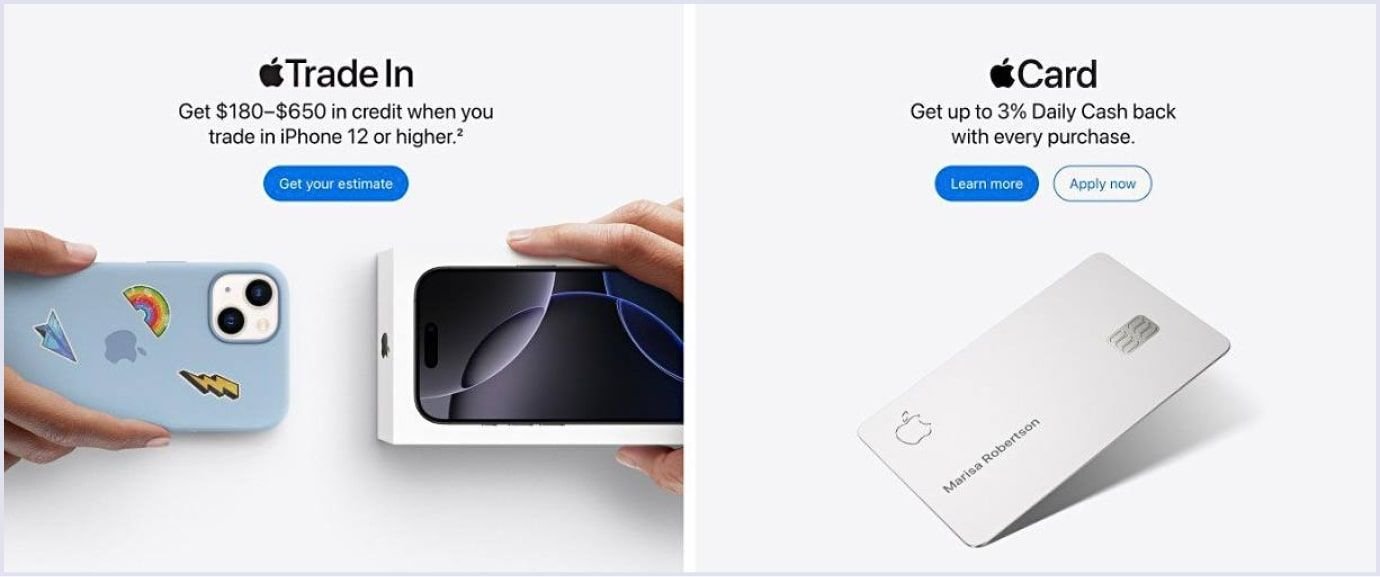
Source: Apple
4. Wall of text
A solid wall of text puzzles and scares off users. Users do not read all the text about products and services on the site's main page. All of us are really busy and don't want to spend time reading a lot of material. The Nielsen Norman Group states that users read about 20% of the text during an average visit. So, it is important to grab users’ attention without overdoing it with the text.
To make the text a pleasure to read, bear in mind the following tips:
1. Use descriptive headings. Divide the text by using headings. The headings will help the reader to understand the main content that is included in each part of the text. Avoid very long titles or slogans, as these tend to appear cluttered and visually unpleasant. If a title is long, consider breaking it into shorter elements for better readability.
2. Keep paragraphs short. Use short paragraphs to present information in a more digestible format. Large blocks of text can be daunting and may deter readers from continuing.
3. Use bulleted lists. If there are several related points to be made, use a bulleted list instead of one long sentence. This format makes it easier to understand and faster to read.
4. Key information highlighting. The use of bold for key phrases helps readers along and makes sure that they find what is important. However, overdoing it can be somewhat distracting and gives a cluttered appearance.
These will allow the designer to visually present appealing, engaging content for readers, helping them stay longer on the page and internalizing your message much better.
Below you can see a great and light-looking design with text enjoyable to read by Blue Check Homes.
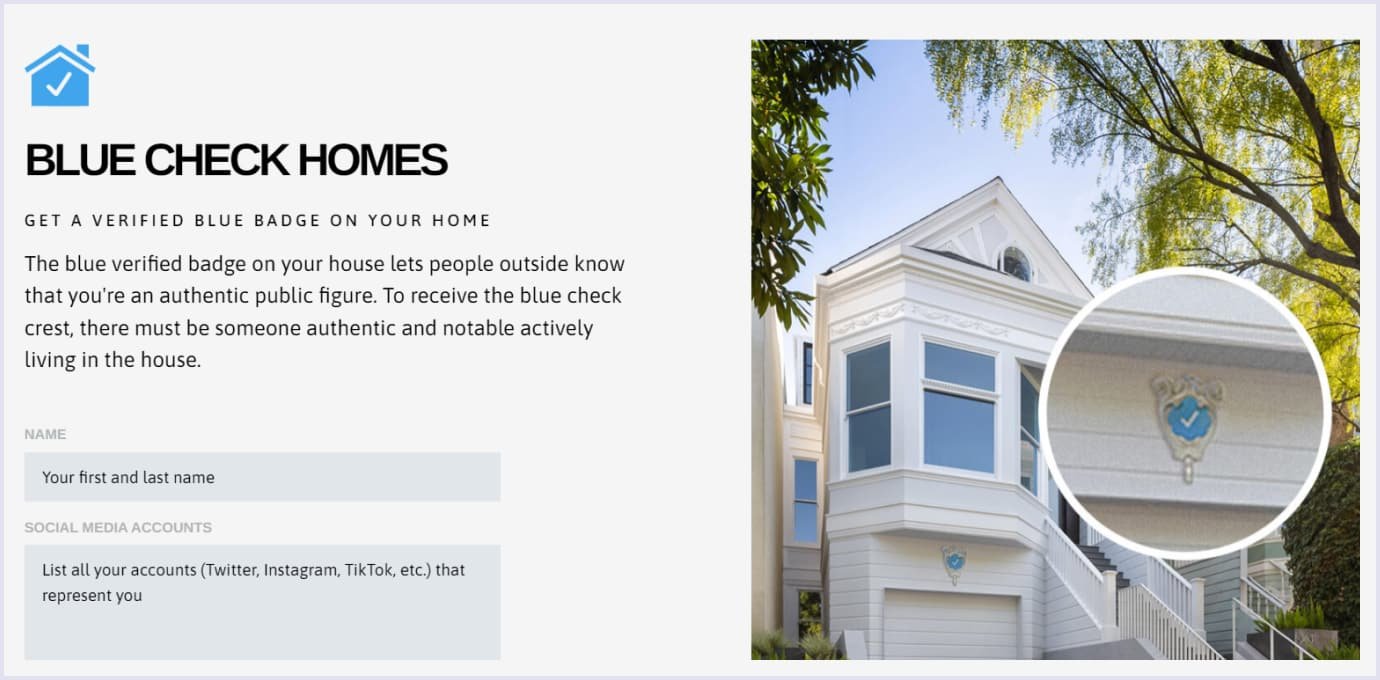
Source: Blue Check Homes
5. No optimization across various devices
With users accessing your website from their mobile devices almost as often as from their desktops, responsive web design isn't optional, it's required. If your design isn't optimised for a variety of screen sizes, you risk losing conversions and frustrating your customers.
A common mistake is to focus on desktop design and treat mobile optimisation as an afterthought. Another mistake is not studying user behaviour thoroughly enough, which can result in poorly tailored mobile interfaces. At Codica, we believe in a user-first approach. By researching the target audience during the project discovery phase, and their preferred devices - be it desktop, mobile or tablet - we ensure that the design meets their expectations.
At the heart of this process is our product discovery services. This phase validates the client's ideas, analyses user needs and priorities responsive design. The result is a solution that perfectly matches the real behaviour of end users, reducing the risk of design mistakes.
For example, we recently developed a cross-platform fitness progressive web app to connect clients with personal trainers. This app is fully accessible from any web browser with no installation required. While the trainers mostly work on the desktop version, the clients enjoy the convenience of being able to access it directly from their mobile home screens. We successfully addressed the needs of both groups by making the design responsive and intuitive across devices.
Watch a short video below to see how this mobile-friendly fitness app works seamlessly.
Related article: How to Create a Fitness App: Codica's Expertise
6. Lots of ads
Advertising on the site is one of the best monetization strategies. However, websites that stick ads through every paragraph are frankly off-putting.
The desires of the website owners are understandable. They want to extract the maximum profit. But, when you overdo advertising, you achieve the opposite effect. The visitor loses concentration and leaves the website without performing the target action.
Because of this, the owner does not receive a client, and the site has an increasing bounce rate. And a high bounce rate is a wake-up call for search engines that it is necessary to show such a site in search results less often. So, this also impacts the search engine optimization of your online business.
Here is a good example of the right ads added by the Adidas website.
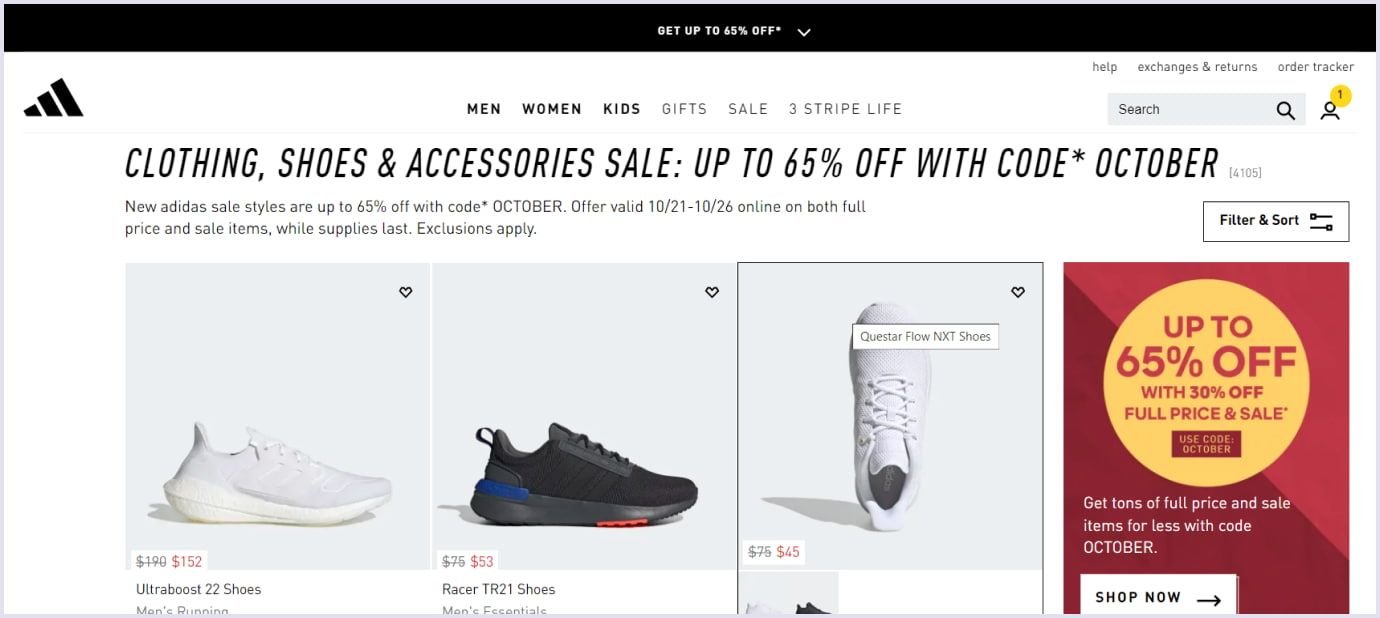
Source: Adidas
7. Inconvenient search
Many users start looking for a search box when they just enter a site. Maybe they know exactly what they're looking for or just don't want to spend time learning about the structure of a website.
Search is essential, whether it's a big site or a small business, whether it's an online store or a blog. Users may come looking for a specific product or service, and they most likely want to find everything with a quick search.
Sometimes, site owners like to arrange a whole quest in search of the necessary goods. This can cost lost orders. But what is the solution? When searching for a product on the site, the user should understand that the intent of their request is taken into account.
If the search cannot be tailored to the user, suggest they go to the site's main categories or the catalog and search for something there.
Recently, the Codica team worked on the boat sales marketplace development. The client applied to us to redesign and improve the existing solution. In terms of UX (user experience) design, we have enhanced search filters. So, we made the search more intuitive, structured, and user-friendly.
New website search brings visitors to the products, services, and content they’re looking for in a shorter time. Thanks to the search improvement, we helped the client to engage more users to stay on the website and shop.
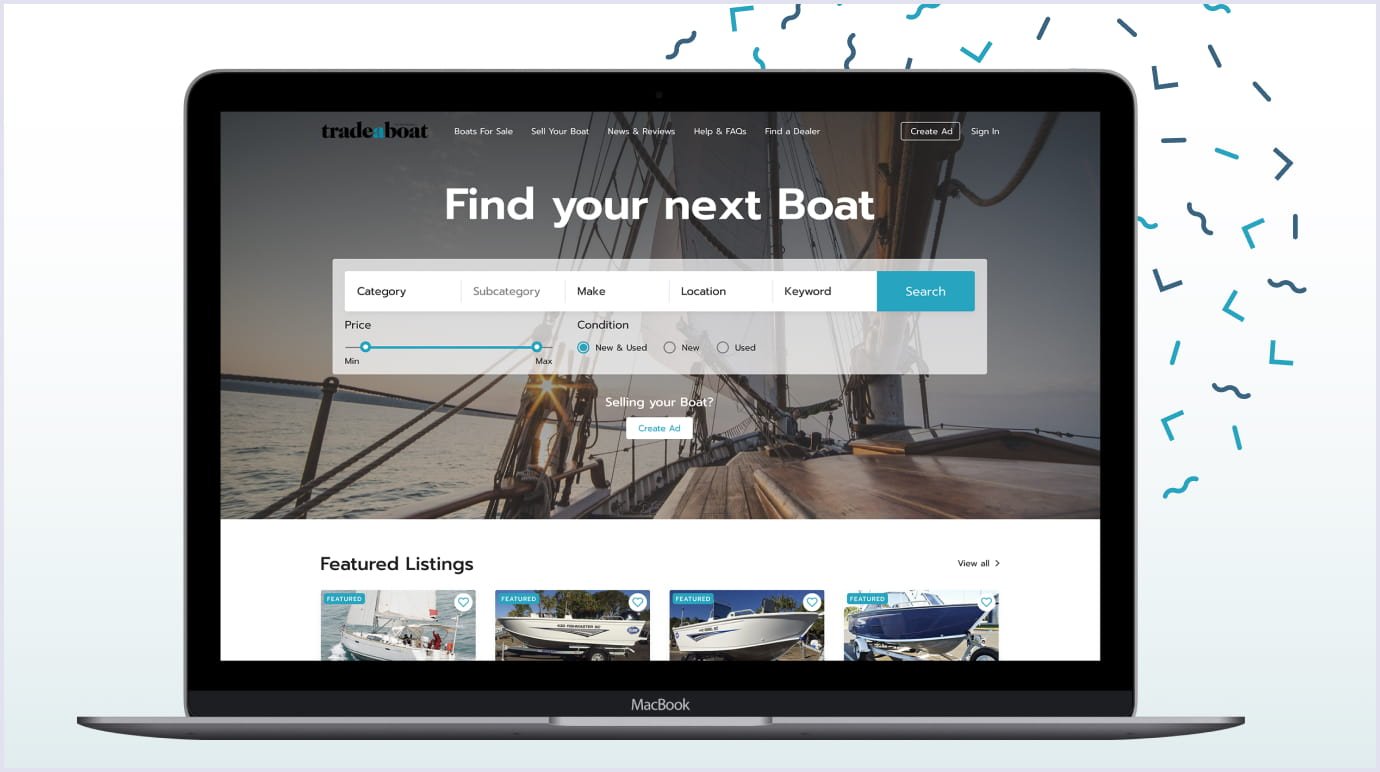
You may also like: How We Delivered Boat Selling Website for Tradeaboat (Case Study)
8. Irrelevant pop-ups
Pop-ups are specific messages that automatically open on a web page while users browse the content.
When implemented correctly, pop-ups can attract potential customers to businesses. In contrast, irrelevant pop-ups prevent viewers from consuming content, especially on mobile devices. As a result, users will leave your platform very quickly.
You should place pop-ups in a way that they don’t annoy users. The following tips can help you:
- Develop pop-ups to appear only if a visitor has scrolled down 70% of the site page.
- For the experiment, display a floating banner pop-up that lets a visitor start your solution trial.
- Make sure that the popup design matches the overall web design.
- Create the CTAs on the pop-up to be understandable and actionable.
- Select the applying fonts, spacing, and color contrast to streamline your conversion rates.
Below is an example of a pop-up by the Smartblogger educational platform.
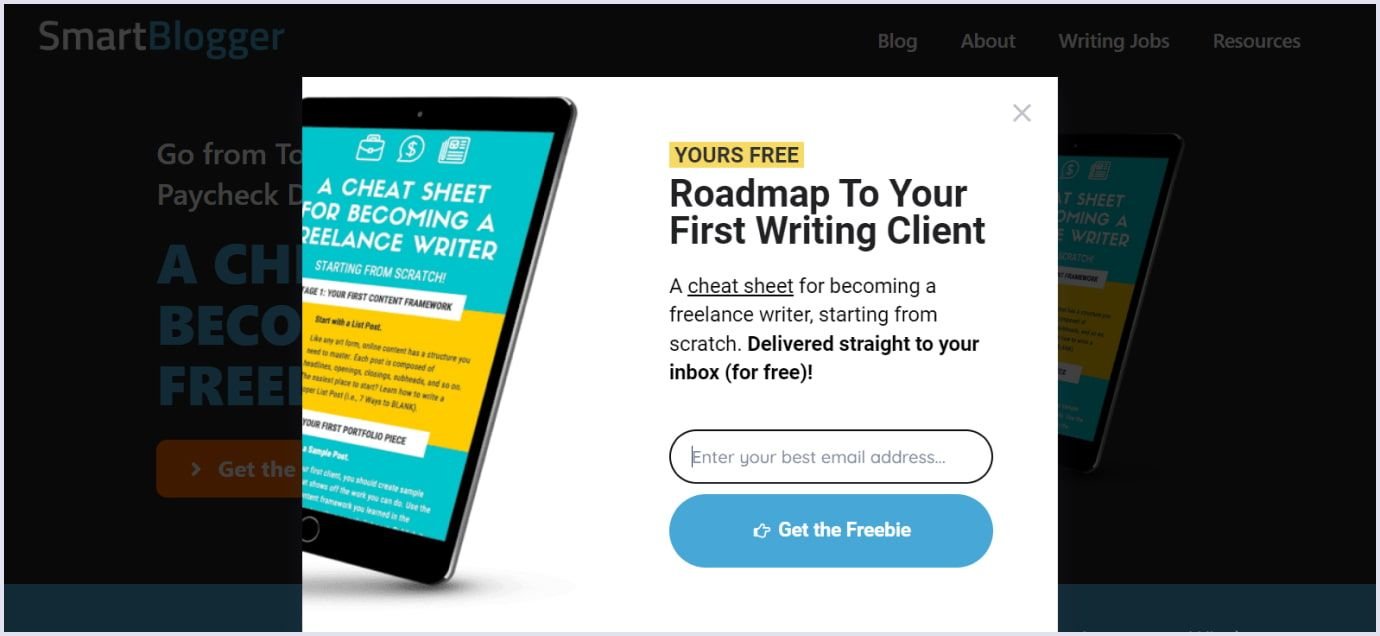
Source: Smartblogger
9. Obscure brand message
Surely, branding is far greater than logo design. Right branding helps create brand awareness.
A consistent look and feel for your solution allows users to go beyond what you offer. They will identify with the things your business and brand represent.
A great example of successful branding is the Airbnb rental marketplace.
Like many present-day brands, Airbnb used messaging that people respond well to. But what helped the Airbnb business stand out? Humanity. In contrast with many overpriced hotels with nameless staff, Airbnb enabled people to open their houses to travelers.
Thus, people staying in these houses will relate to them as to their homes. Airbnb's slogan, “Belong anywhere,” reflects its main message to users. Take a look at how DesignStudio skillfully executed the branding concept for Airbnb:

Source: DesignStudio
Nowadays, Airbnb's market capitalization is almost $80.98 billion. This brand has successfully gained the confidence of customers and grown into a real market giant.
So, it is vital to develop your own website style. Use specific colors and illustrations that will be associated only with your brand. Strive for style consistency at all levels of site design - typography, colors, and illustrations.
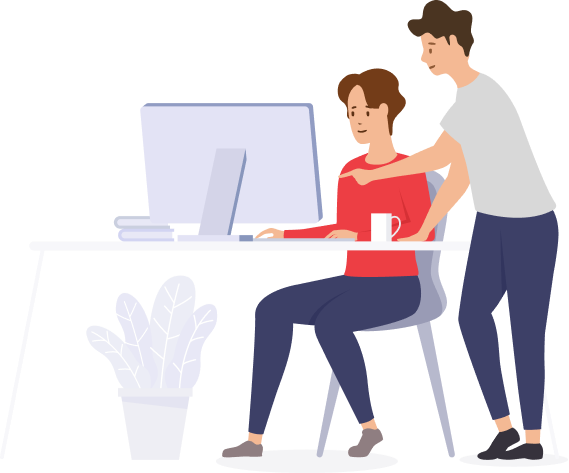
10. Visual noise
The noise effect occurs when there are too many elements on the page. Maybe separately, these elements are beautiful, but when they are together, it can be confusing, and the main thing is lost. Moderation in everything is an excellent rule for website designers!
Sticks, dots, strokes, circles, and ticks are the favorite decorations of many novice designers. But it is not worth littering the design with unnecessary elements.
It is essential to understand the difference between noises and details. By working with the details, you improve the website design. By using noise, you worsen it. Noises litter the space. They don't reflect the idea and style of your brand. On the contrary, details are an indicator of your expertise.
This is an example of a clear and appealing design by the Appraisd performance management platform.
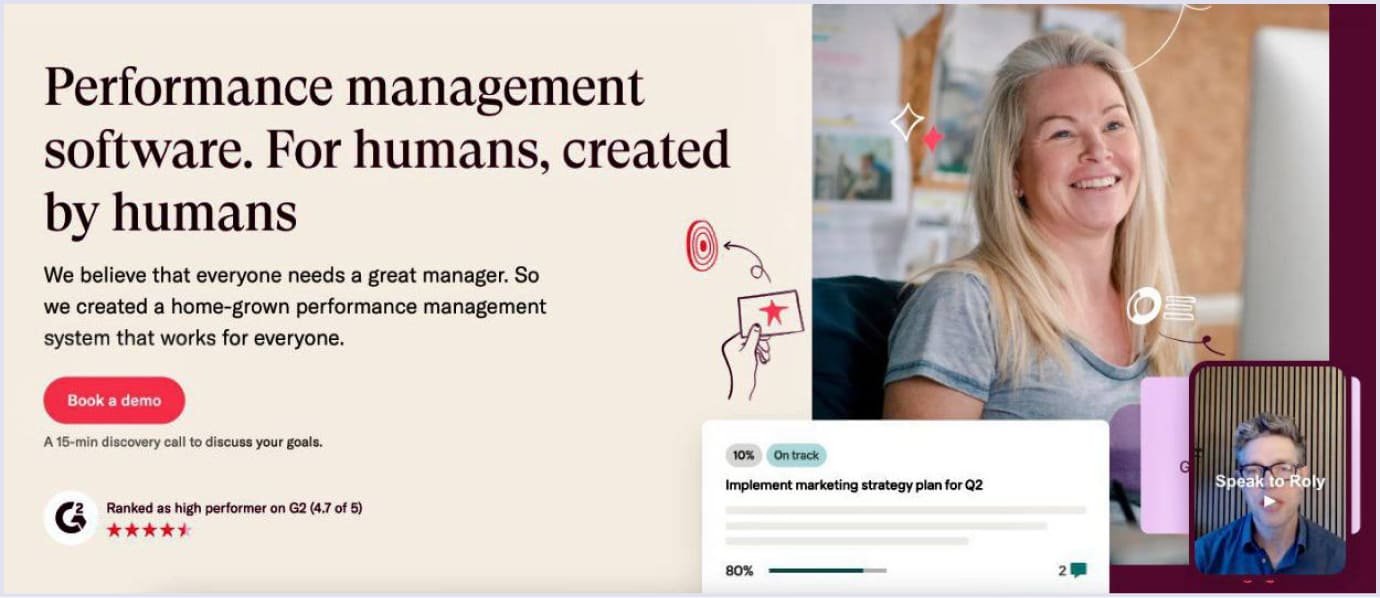
Source: Appraisd
You may also like: Progressive Web App Design: 9 Tips for Great PWA UX and UI
11. Motion design overuse
Dynamic animation can become the advantage of the site, or it can spoil its impression. Here you should follow the golden mean and not oversaturate the page with the number of gifs and other video elements. An excess of animated objects distracts the user from the purpose of the visit.
Too active use of motion design and gif animation does not solve business problems. Why? Because they perform a decorative function without inducing sales. In addition, the site should be convenient for users who access it from any device and with any connection quality. And a large number of moving elements slows down the page.
This mistake is often made by novice designers who want to be creative and make the visual colorful. It is important to remember that any creativity in the context of business tasks should be appropriate. You should analyze competitors' offers and identify what works for them.
For instance, the FlyHyer website used motion elements on the first page but in moderation. So, it looks eye-pleasing and, at the same time, grabs users’ attention.
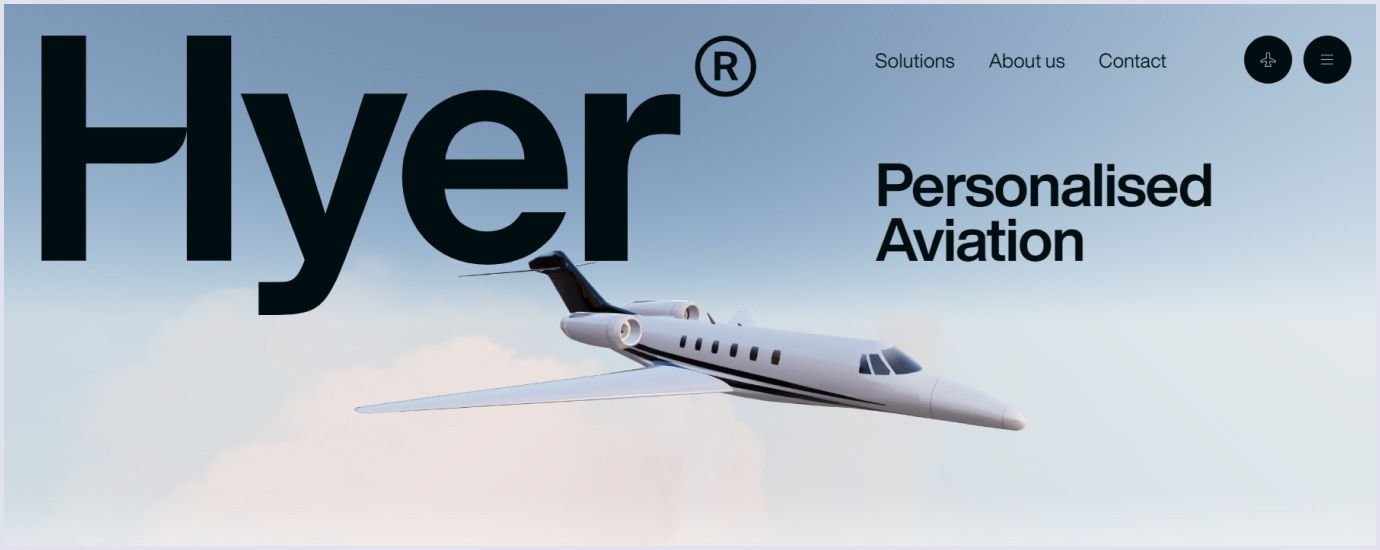
Source: FlyHyer
12. Sophisticated registration forms
One mistake that web designers make when making registration forms too complicated is to ask for more information up front, thinking that this will help them understand the customer and create better conversions. In reality, the opposite is often the case. When users see a long form that looks like it's going to take them a long time to complete, they won't think twice before abandoning the process. Instead, they will move on to a competitor that offers a faster, more user-friendly way to sign up.
The key is simplicity. Research shows that reducing the number of fields on a form can significantly improve conversion rates. For example, forms with fewer fields are 25% more likely to be completed. Aim for no more than 4 fields - ideally just two, such as a name and contact details, either an email or a phone number. Streamlining your registration forms will encourage users to complete them, helping you to retain prospects and improve the user experience.
If this is an online store, then you should divide the form into several blocks (information about the client, delivery method, payment method, etc.). But it should still not take more than a couple of minutes to make an order.
Not long ago, Codica's experts worked on custom ecommerce solution development. And we created the interactive sign-up feature for sellers.
So, when vendors aim to register on this ecommerce site to trade services or products, they should fill in the questionnaire form. For that, they answer certain questions.
The sign-up form is clear and enjoyable, with icons on which vendors can click to answer questions. With these answers, suppliers are offered the most appropriate membership type for them in the end.
This way, the small business does not pay as much for a subscription as the big store. Moreover, if the user sells just services, they will not pay for the functionality of trading goods.
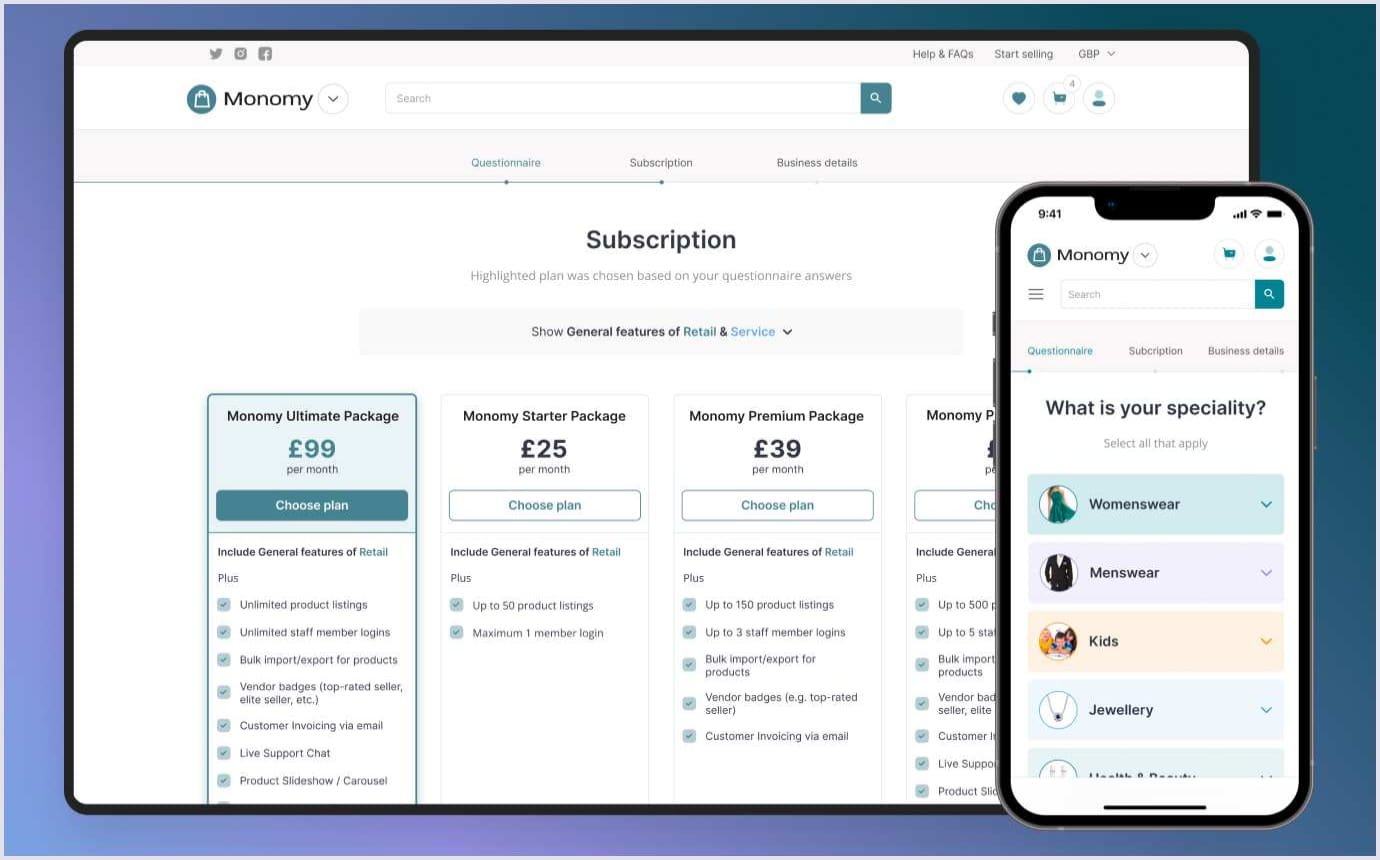
Recommended reading: Minimum Viable Product Design: How to Build a Successful MVP
13. Inappropriate location of product cards and categories
Placing promotional or popular products on the main page is a common and understandable decision. It immediately pushes the user to go to the catalog. But sometimes, designers overload the page with product cards, which is confusing. The goal is to show the customer a variety of products, but the result is the opposite.
Too much choice scares away. And this is the next of the main website design mistakes.
Pay attention so that the user does not run up eyes from the number of products. Group them into categories and work on accessible, simple, and smart navigation. It helps to increase conversions.
Focus on successful websites that demonstrate the competent organization of the page space. For instance, Etsy. The categories of products on the Etsy site are simple and convenient, despite plenty of them.
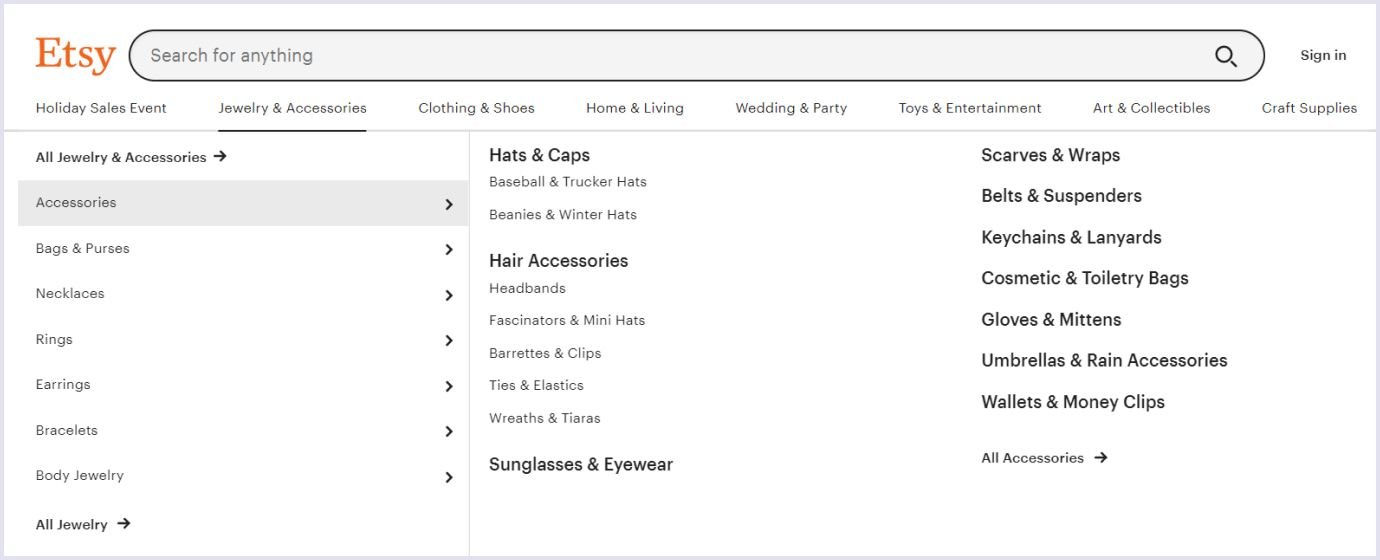
Source: Etsy
Read also: 5 Major Principles for a User-Friendly Website You Need to Know
14. Outdated design
Regardless of your industry, your website must be up-to-date in both technological and design aspects. It is essential for customers to know that the brand is keeping up with the times.
This also applies to modern product cards, news feeds, recent publications on the company's blog, and current promotions. Your audience may not follow new design trends, but they will intuitively feel cared for if you make a quality web product.
For instance, Codica’s experts redesigned the TradeRVs caravan selling website. It is a complex project intended for campers in Australia. There, they can sell or buy new or used motorhomes, caravans, camper trailers, and other recreational vehicles.
The client wanted to obtain complete website redesign services for the existing platform. So, we improved the previous solution, developed a new web design, and integrated the website with third-party apps. Thanks to the new modern design and other improvements, our client enhanced lead generation performance by 480%.
Below, you can see a video that demonstrates how this platform works.
15. Wrong color combinations
The main professional quality of a designer is observation. So, it is necessary to constantly develop a sense of beauty and follow the trends of graphic design. Knowledge of color and understanding of the psychology of its influence are important competencies.
Users are annoyed by flashy color combinations and bright navigation elements on a neutral background. They do not like a large number of shades in one picture. In this case, the visitor does not understand what to pay attention to and how the semantic hierarchy of the page is built. Don't forget that color is an effective tool that emphasizes what is important.
Furthermore, make sure that the accents are placed correctly. So, you should not highlight the heading with a too-narrow color block. The title is already noticeable due to the font size. It is better to use one color for the entire semantic fragment, separating it from others.
One of the most common mistakes is picking a shade that is too pale for a typeface. Light grey on the white background, for instance. In this case, the text readability may suffer.
Your web solution's colors should align with your brand identity to foster emotional connections and deepen customer trust.
Below is a great example of a beautiful and vivid design by the Gumroad web solution.
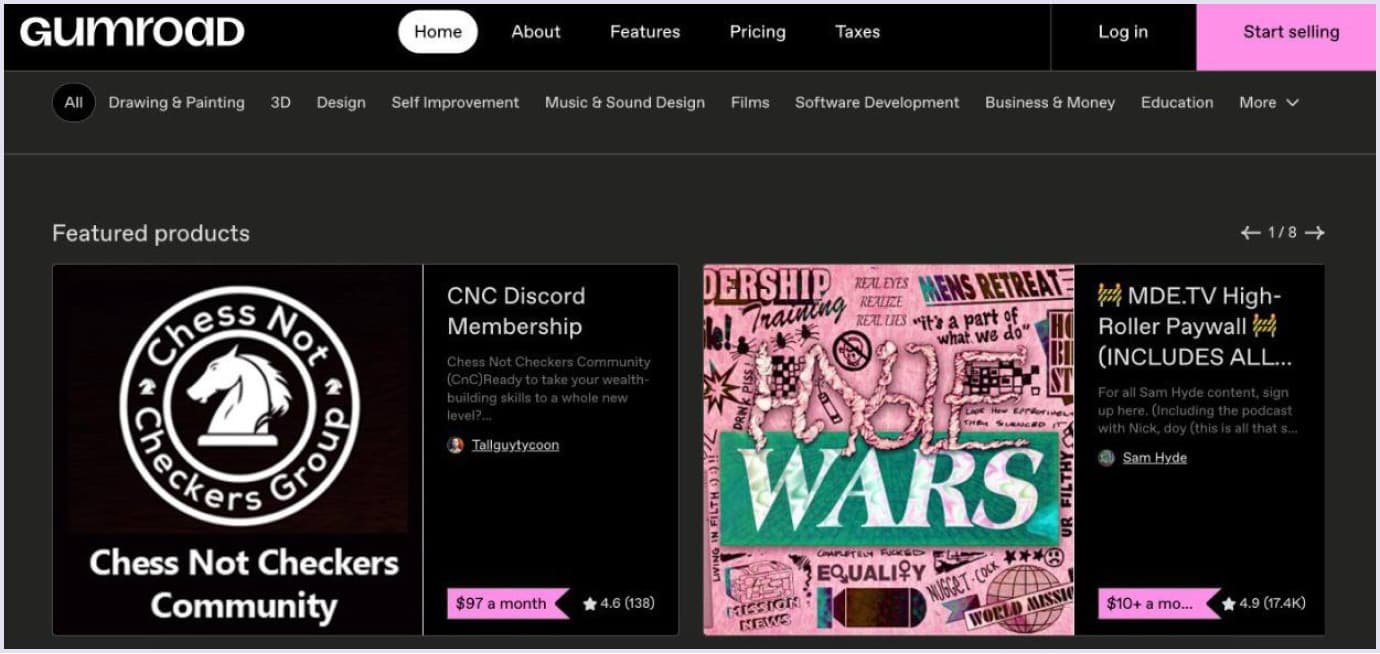
Source: Gumroad
Let your business evolve with stunning design
Mistakes are an invariable part of reaching a new level of knowledge. We hope this piece has assisted you see many common mistakes to fix them.
There are hundreds of examples of beautiful and stylish websites, but dozens of them really sell. Therefore, you definitely need analytical skills and the ability to look at the design critically from the client's side. In this case, the design will become a strong tool for increasing profits.
If you already have an idea for a web design and are looking for a partner to implement it, contact us. You can check our web applications portfolio and company profile on Behance to ensure our expertise. Our team will be pleased to help you succeed.
